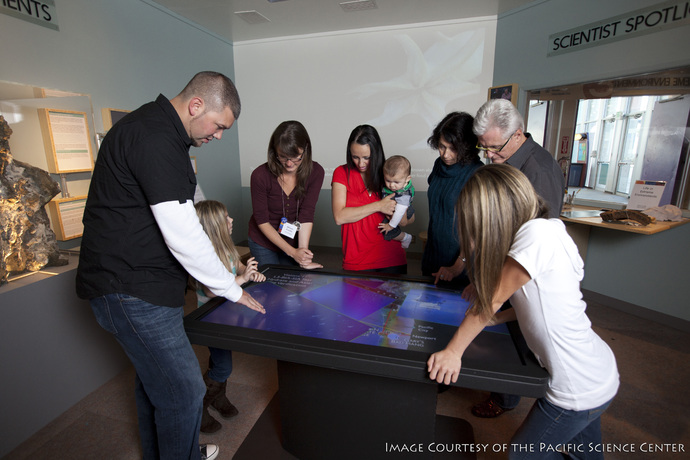Informal Science Education

Oceanography in science centers, aquaria, museums, libraries, and living rooms...
This transformational shift in technological and research abilities can enable parallel and equally powerful educational opportunities.
The Cabled Array provides ability to be present interactively throughout portions of the ocean without actually being there. This transformational shift in technological and research abilities can enable parallel and equally powerful educational opportunities in real-time ocean phenomena that can reach a vast spectrum of Internet-connected audiences in a host of settings ranging from science centers, museums, theaters, to living rooms, personal computers and handheld devices. By connecting to these audiences, we will be able to shift the awareness and appreciation of the public regarding the crucial importance, the dynamic behavior, and the finite nature of the ocean that can drive or disturb the ecological stability of Earth's ecosystem. Additionally, this high power and bandwidth system connected directly to the Internet, provides a window into opportunities available to next-generation scientists and engineers into the arena of scientific inquiry, engineering design, and technological innovations.
For the past ~15 years, we have brought the experience of oceanographic research to the public through a variety of avenues. Beginning in the late 1990s, we brought the deep sea to the public through NOVA and BBC documentaries and contributed several thousand pound, intact, hydrothermal vent samples to sites across the country, including the American Museum of Natural History and Seattle's Pacific Science Center. In 2005, we connected to onshore audiences though a real-time video stream during an oceanographic research expedition for the first time. In susbsequent years, including the VISIONS'15 cruise, this real-time connection effort has evolved to enhance the experience for viewers by adding more technologoes and interactive components, allowing viewers to experience sea-going research without actually being there.
In 2012, OOI Cabled Array Director and Principal Investigator, John R. Delaney, received the American Geophysical Union’s Athelstan Spilhaus Award. The Award is given for contributions to the enhancement of public understanding of the Earth and space sciences. The Award recognizes Delaney's long and effective history of engaging the public, students, and teachers in learning about the oceans. We continue this dedication to public engagment through the annual VISIONS cruises, taking 20-45 undergraduate students to sea on our Operations and Maintenance cruises, through continued partnerships with production studies, and through K20 outreach.

